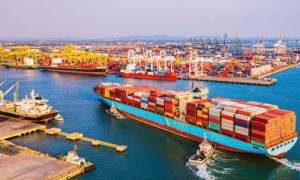Doing business in China is becoming increasingly attractive for Australian retailers and producers alike. As Chinese consumers demand more Australian products, it’s important for Australian businesses to explore a variety of ways to make full use of the opportunities the market offers.
Selling directly to the consumer (B2C) makes sense for a lot of businesses. But for others, selling directly to businesses (B2B) in China seems more logical. Let’s look at why.
Market snapshot
As our biggest trading partner, China plays a vital role for many Australian industries. Valued at over $150 billion, cross-border trade between Australia and China has increased in recent years, and it’s not just commodities: Australian service providers did $8.4 billion worth of business in China in 2014.1
The raw figures are astounding: the Chinese B2B market could reach $2.1 trillion by 2020, a sizeable portion of the estimated 2020 global B2B market of $6.7 trillion, and the Chinese B2C market is expected to reach $3.2 trillion over the same time.2
With shoppers in China increasingly able to pay for high-quality international products, imports are expected to grow from $21 billion in 2014 to $245 billion by 2020.3
Customs and considerations
Personal relationships are important when doing business deals in China. You could almost think of B2B commerce as P2P – person-to-person. Your dealings with individuals can determine your success, so make sure your approach to business and social meetings are culturally relevant.
For example, the concept of guanxi, the development of mutually beneficial relationships outside of work settings, is an essential part of doing business in China and may seem different to your usual practices. If you haven’t had any experience in the area it may be a good idea to hire a translator and cultural advisor, or visit the Austrade website for advice.
Freight considerations
There are a lot of businesses and industries that would benefit more from a B2B approach in China than a B2C approach. Take for example the wine industry.
While Tmall, China’s most popular B2C website, is a great entry point into the Chinese market, customers are limited to just two bottles of wine per transaction and often bear the cost of any additional air freight charges.
In contrast, a B2B approach involves sending bulk amounts of wine, usually in pallets, to China via sea freight. The wine is sold in bulk to a wholesaler, who then sells to retail outlets such as restaurants and supermarkets in smaller quantities. For the Australian company, it is simpler and more cost effective to send the freight this way; for the Chinese consumer, it means avoiding air freight charges.

Growing appetites
Australian wine accounts for 15% of Chinese import demand, second only to France, which accounts for 43%. In fact, China’s demand for Australian wine more than tripled between 2008-2013, from US$61.5 million to $221 million.4
The Margaret River Wine Association is already making use of the demand for high quality wine, recently inking a deal with a wholesale distributor and opening operations through Australia Post’s pavilion on the Chinese B2B website 1688.com. The Alibaba-owned 1688.com will allow Chinese retailers to buy Australian wine in bulk, saving on supply chain costs and making premium wine more attractive.
“This means our wine is more likely to be within reach of the Chinese consumer,” says Nick Power, CEO of the Margaret River Wine Association.
Power is excited about the prospects for this B2B channel into China.
“As far as Australian wine regions wines go, Margaret River is trailblazer, and we know other regions are keen to start selling via this platform as well.”
Over the past five years, Australia has been second-most searched country on Baidu, China’s most popular search engine, coming second only to the US.5 Clearly, Chinese consumers are interested in what Australia has to offer. And producers such as Margaret River Wine Association wineries are taking advantage.
Partners and platforms
So why choose to sell via an online B2B site such as 1688.com instead of finding a direct partner? One of the most attractive elements is Australia Post’s relationship with China Post, which allows participating Australian businesses to experience true end-to-end logistical services that connects Australian producers directly to Chinese wholesalers.
Because of this close connectivity, eCommerce is forging new paths to the market, and linking producers with wholesalers and consumers like never before.
This content was originally published on startrack.com.au. If you are interested in similar articles, check outhttps://www.startrack.com.




















